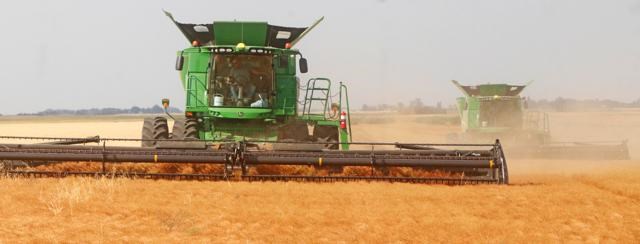Perfect hot, dry weather allowed most farmers to make a start to their harvesting in southeast Saskatchwean, with five per cent of crops combined, and six per cent of the crops swathed or ready to be straight-cut.
The harvest is being the five-year average of nine per cent combined at this time of the year.
Provincially, the harvest is four per cent combined, with six per cent of the crops swathed or ready to be straight-cut.
Of the crops which have been harvested, 67 per cent of the fall rye has been combined with 20 per cent still standing; 47 per cent of winter wheat is combined with 29 per cent still standing and 23 per cent ready to straight-combine; 42 per cent of field peas is in the bins, with 40 per cent still standing and 16 per cent ready to be straight-combined; 23 per cent of lentils is combined with 53 per cent still standing and 21 per cent ready to straight-combine; and 12 per cent of barley is combined with 77 per cent still standing and eight per cent ready to be straight-combined.
An additional six per cent of canola crops have now been swathed, and some of the barley and oats crops are being harvested for greenfeed.
Looking at other crops, five per cent of spring wheat has been combined, along with four per cent of soybeans and one per cent of durum.
Parts of the southeast region received some rain from scattered thunderstorms, including 41 mm in the RM of Tecumseh, 8 mm in the RM of Brokenshell, 32.5 mm in the RM of Francis, and a range of 5 to 7.6 mm in the RM of Laurier in the Radville region.
Topsoil moisture conditions improved in the region this week. Cropland topsoil moisture is rated as 62 per cent adequate, 33 per cent short and five per cent very short. Hay and pasture land topsoil moisture is rated as 50 per cent adequate, 38 per cent short and 12 per cent very short.
The majority of crop damage this week was due to wind, lack of moisture, heat and grasshoppers, with reports also of flea beetle and hail damage in the region.



